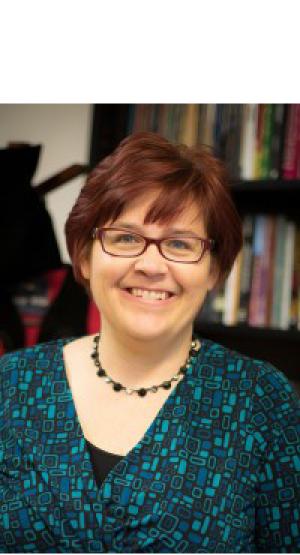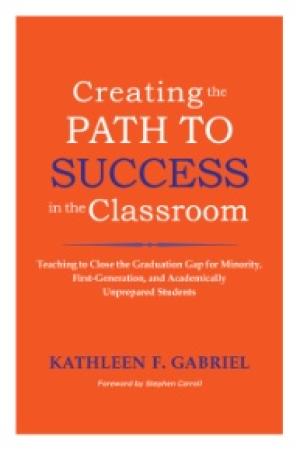Resources
Travel Information for Participants Already Accepted into the WorkshopGround Transportation: About a week prior to your travel you will receive an email from Beth Reffett (reffettb@wabash.edu) with airport shuttle information. This email includes the cell phone number of your driver, where to meet, and fellow participants with arrival times. Please print off these instructions and carry them with you.

Back in the summer of 2017, these Deans of theological schools from the US and Canada set out on a journey of building a community of trust, respect, friendship, and collaboration to work on some of the most challenging issues facing theological education today. Comprising a religiously and geographically diverse group of leaders, the Wabash Deans Colloquy has embraced over its two, four-day sessions (Summer 2017 at Wabash College; and Spring 2018 on Mustang Island, TX) the signature Wabash Center for Teaching and Learning in Theology and Religion combination of rigorous collaborative peer learning with community building and play in order to navigate the boundaries that divide us religiously (Evangelical, Roman Catholic, mainline Protestant, and Christian and Muslim), and the contemporary institutional instability that often seems to foster a spirit of competition rather than collaboration among our schools. On this journey we explored the alignment of Deans' vocations with the mission of our schools, probed possibilities for ways our teaching and learning can promote the common good in our different contexts, and considered how best to equip ourselves for academic leadership in curriculum revision, assessment, and faculty and student formation in times of intense cultural and religious change. We've shared in prayer, meals, card games, deep conversation, hot putt-putt golf (like hot Yoga, but golf), dolphin watching, and collaborative writing with one another. Formed now as a collegium, our voyage continues. Just what the future holds is not certain for theological education in any of our contexts, but no matter the challenges or opportunities we face, we are thankful that one thing the future holds is the promise of traveling in such good company.

Interrupting Institutional Patterns of Trauma (Non)Response Moving is difficult. In the past twenty years, I’ve moved fifteen times and I am in the middle of another move right now. Some moves were by choice and others due to unexpected circumstances. Moving is laborious–packing, reimagining space, anticipated and unanticipated expenses, unpacking, broken pieces of cherished material items, revisiting old stuff, exposing the insides of a home to anyone who offers to help at a time when one needs a lot of help, communicating address changes, responding to the questions that arise: now why are you moving? In the academic life, moving takes valuable time away from research and good teaching, service and self-care, thinking and writing. At least three times at three very different parts of my life, I have been offered the opportunity to move when faced with a potentially traumatic set of circumstances. Someone in the building is threatening? You can move to another building. Something happened that violated the safety of your placement? You can move to another placement. Something in your classroom is disruptive to your teaching? You can move to another classroom. The subtext is often “deal with it or move, nothing is going to change here.” And I have found myself responding on a visceral level: I’m Not Moving, You Move! I’ve also seen this response given to colleagues and students. Institution is toxic? Go back on the job market or switch schools. Toxic roommate? Move to a different dorm. Toxic work environment? Move to a different floor. Internship is not holding up its part of the bargain and supervisor not supervising? Switch internship placements. Instructor made an inappropriate comment that made a student uncomfortable? Move the student to another section. The subtext remains “deal with it or move, nothing is going to change here.” And still, I hear that visceral voice: I’m Not Moving, You Move! Moving in order to leave a toxic situation can be life-saving and should not be minimized. In my pastoral care classes, for example, I teach students to partner with local domestic violence shelters to know whom to call to help future parishioners, clients, and colleagues be ready to leave (seminary doesn’t train pastors for this, so they need to partner). The underreported statistics are clear: every institution has some history or current instances of violence and, as a leader, you are identified as a safe or unsafe person to consult for help. Sometimes students can’t believe that it can take an average of seven attempts to leave a dangerous relationship of intimate partner violence. Sometimes students say, why can’t they just move? Survivors in the community know the answer: moving is difficult and intertwined with all kinds of complexities. Moving itself can be life or death. At worst, immovability advocates don’t just tell more vulnerable persons with the least moving expense resources to move, they say, “move or die.” In one of the FaithTrust training videos, an interviewee who left an intimate partner violence relationship and was the pastor’s wife, said that she could have stayed, but then she’d be a dead pastor’s wife.[1] Moving can be life itself, but who is asked to move? From an interpersonal to a systemic view, why do systems foist all the moving on the more structurally vulnerable party, often requiring nothing of the system? Again, we know the answer--moving is difficult. According to Sarah Ahmed’s research on complaints in higher education around harassment and diversity-related infractions, it is the nature of institutions to put up brick walls where they don’t want to or can’t imagine moving.[2] All the packing, unpacking, exposing, digging up old things, hidden expenses, phone calls to change over all the bills, address changes, explaining the move–in the best of cases, it’s a lot. In more dire situations, it can be so emotionally draining to move. Why can’t the system take on more moving responsibilities? Why can’t the toxicity makers be made to move so that everyone can live in a less toxic environment? Someone in the building is threatening? Make the building community safer. Revisit policies, revising and setting up new accountabilities. Something potentially threatening is happening in your placement? Take the placement off the list for now and rethink training, supervision practices, and accountabilities for placement supervisors. Something in your classroom is disruptive? Increase reporting and responding channels so that the classroom supports learning and thriving. Instructor made an inappropriate comment that made a student uncomfortable? Believe the student and move the instructor, providing training and counseling for all parties. Use the policies in place for this situation or create them. Somedays I think I never want to move again. I don’t want anything else to break by accident. I don’t want to fill out another mail forwarding request and hope I remember to move everything over to a new address, finding out months later what I forgot or not finding out at all. You’d think I’d have all this down by now, but moving is exhausting. I have experiences of having been asked to move without any movement on the part of anyone else who could have moved and helped the situation immensely. Other times, it’s clear that I am part of a system that rewards immovability and I must remember the importance of moving together and then move. But I do like the experience of having moved because having moved can restore and create possibilities for new life. Where in your life, work, and institution can you see needs for such restoration? Where in your institution are more minoritized or more vulnerable community members being asked to move and change while the system remains unchanged? What can you do to influence systemic change to flip the script: You shouldn’t have to do all the moving, I’ll move too? [1] See www.faithtrustinstitute.org [2] Ahmed, Sara, Living a Feminist Life, Durham, NC: Duke University Press, 2017

In many traditional classrooms, the teacher uses lectures to transmit course content to students. A “flipped” classroom is one in which a teacher presents lectures and delivers other course content outside of class (for example, via video- or audio-recorded and written instruction) and prioritizes activities, discussion, and higher-level analytical thinking during class time. Flipped Instruction: Breakthroughs in Resource and Practice offers readers the latest theories, strategies, and pedagogies on flipping classrooms. Bringing together thirty-seven contributors from seven countries, thirty-two colleges and universities, four high schools, and one institute, it presents “a comprehensive collection of research on the latest findings” on flipped teaching and learning in order to provide “researchers, practitioners, and all audiences with a complete understanding of the development of applications and concepts surrounding these critical issues.” (ix) Each contributor operates under the assumption that flipping a classroom in a professional and pedagogically informed manner begets educational gains that far exceed the costs of time investment, technological learning curves, and pedagogical challenges. In chapter 4, David Starr-Glass makes a memorable statement about the benefits by explaining that a flipped classroom “changes a teacher-centered process to a student-centered one. The ‘sage on the stage’ becomes the ‘guide on the side,’ with a shift from transmission to learners to a flow among and between learners.” (51, emphasis in original). This book addresses nearly every domain where flipped teaching has made significant inroads: K-12 education, higher education, online, ESL, and foreign language education. Its twenty-four chapters are organized into four main sections. Section 1 (Chapters 1-6) addresses course design methodology and how the latest pedagogies impact flipped classrooms. Section 2 (Chapters 7-12) discusses the unique challenges and opportunities of flipping ESL and foreign language learning classrooms. Section 3 (Chapters 13-20) considers flipped instruction in higher education. Section 4 (Chapters 21-24) offers the latest curriculum developments in K-12 education. Flipped Instruction accomplishes its goal of providing educators with a comprehensive resource on the latest research in theory and practice. It also strikes a nice balance between being academically-oriented and practitioner-oriented. Academics will enjoy the book’s emphasis on new theories, pedagogies, and educational innovations, and practitioners will appreciate the takeaways from educational experiments, the rich repository of resources, and the activities to try in the classroom. That stated, the book would serve its readers better if it were more learner-friendly, an ironic weakness since it was written by expert teachers who value learner-centered education. Perhaps under the watchful eye of a single editor, it would exhibit stronger collaboration between authors, be better organized, and would avoid needless repetition (for example, an unusually high number of authors reviewed the history of flipped classrooms). Teachers of theology and religion who appreciate flipped instruction or who practice it as a pedagogical strategy will appreciate the many resources that Flipped Instruction provides in course design, Internet and computer software ideas, and learning activities. However, the book is not a primer for the uninitiated in flipped teaching and learning. A different book would be a better introduction to the subject.

“Spiritual Companioning for Ministry” is a course I recently taught for the first time for a colleague when she took a well-deserved sabbatical. She shared her syllabus and course plan with me and told me that she usually taught it to about 12 students which worked well for the topic. A couple of weeks ahead of the semester, I realized that I was going to have to make some major changes fast; close to 40 students had registered. The class involves a lot of sharing, often around intense topics, in order to become skilled in responding to the issues that surface when companioning others on their spiritual journey. I needed to design a way for so many students to have the ability to engage the texts as well as form a confidential and trusting learning community for the many discussions of this course. The key was to build effective small groups, which we called learning teams. Because Catholic Theological Union has students from around the world we used part of the first class to divide students into learning teams that allowed for diverse voices in each group. During that first class, we also discussed small group dynamics and the learning teams were invited to develop “ground rules” or covenants they wanted to keep with one another. (Examples of covenant points include confidentiality, cell phone use, planned facilitators etc.) The learning teams soon became the cornerstone of the class. They provided a rich framework for practical experience and integration of course material. Community within each learning team was fostered in a number of ways: The classroom was rearranged so that each learning team had a table to sit around. Tables were spaced so that intimate conversations could take place and other groups were not too close. This physical arrangement set the tone for the atmosphere I was hoping to foster in the class. Each session included discussions within learning teams. Discussion prompts might have been for groups of two or three or discussions for six, but students were always in discussions with someone from their learning team. This allowed for a mix in the types of discussion but kept discussions within the learning teams to build relationships throughout the semester. Each class began with a reading assessment where learning teams would discuss the readings and work through an assignment of questions or activities about the readings. This encouraged each student to stay on top of the readings, as their small group would expect their participation in these weekly conversations. Students completed “noticing journals” on our online D2L course management system. They were asked to post brief responses to prompts such as “Discuss a time this week you talked with someone about prayer” or “Discuss a time this week you noticed someone talking about or discerning a decision.” These posts would be read and responded to by learning team members online. One of the gifts of the online discussions was that students who were more hesitant to participate in the larger class setting had an easier time participating in the online forum. Throughout the semester, the worksheets on the readings, the noticing prompts, and in class discussions were more involved. Students engaged one another on progressively deeper levels. I spent less time engaging them in a large group but floated around the room checking in on their discussions, answering questions, and making notes for the next class’ lecture based on what I was noticing in the teams. During the semester, several students experienced serious illness or a death of a beloved family member. The learning teams provided an intimate hands-on forum for spiritually companioning one another in a way that the larger classroom could not have handled. On the last day, I brought in “talking pieces” that represented various discussions from the semester and invited students to “end well.” Learning teams were encouraged to select a talking piece and give each person in their group a challenge, a commendation, and a blessing. The learning teams took their time with this session; some continued well beyond the allotted class time. The sharing was deeply emotional and confirmed that learning teams within a large class provided the framework that modeled and built companionship in a profound way.

How do theological educators help students face the constant reality of failure? Picture this scenario: a second career divinity student suffers health and financial troubles that impede her studies. The impact of these issues revives past psychological wounds. Enduring this morass of difficulties leads to the student’s failure in several class assignments. Further, the weight of the unresolved emotional burdens, partly resurrected through themes in classwork, results in crippling pessimism, angst, and depression. The student begins to conclude that dropping out of school is the only solution despite the negative ramifications this decision will have on her career goals. What are the pedagogical possibilities for instructors and students with regard to issues of failure both in and out of the classroom? In addition to keeping students aware of campus and local health resources that accommodate various needs (including psychological and counseling services, for instance) instructors can develop a helpful methodological ethos around success and failure in the classroom. As the prophet Jeremiah testified, “You shall say to them, ‘Thus says the Lord: When people fall, do they not get up again? If they go astray, do they not turn back?’” (Jer. 8. 4) Pedagogical strategies for encouraging students to confront and overcome failure begin with instructors modeling a lack of fear in this regard. Teachers are not perfect. Nor are lectures, teaching plans, or classroom activities executed perfectly at all times. Responding to hiccups in real time classroom settings indicates there is a way back from past failures as well as traumas that may be at the root of student underperformance. This models effective coping strategies for students. Further, it is helpful to assist students to find ways of processing how the legacy of trauma, both collective and personal, affects learning. Part of the impact of trauma is the defensive posturing in individuals and societies that tends to obscure the origins or initial events that contributed to experiences of upheaval. Theological education, which assists in the dissemination of epistemologies based in critical inquiry, enables students to interrogate traditional and received interpretations, even if, in some cases, only to validate them. Just as the use of critical inquiry in coursework can provide opportunities for facing themes and opening pathways related to trauma in social experience, so can pedagogical strategies, structured in this framework, hone methodological skills of survival and success for students. Developing opportunities for students to enact these strategies also enables instructors to assess the usefulness of particular methods and modes of presentation. The familiar mantra, “If at first you don’t succeed, try, try again,” was originally written to encourage students in the educational process. Indeed, teachers can develop specific strategies to help students face problems in classroom performance. These include not only acknowledging difficulties when they arise but also incorporating tactics that analyze obstacles in classroom exercises. For example, tracing patterns or connections, dissecting complications, wrestling with incongruities, working through potential solutions, and testing their implications in classroom exercises model the confrontation skills necessary for overcoming failure. Built on the paradigm of evaluation, critique, and re-evaluation, such teaching methods can help develop the kinds of students who encounter defeat, yet refuse to fail.

Emily Dickinson said, "Hope" is the thing with feathers - That perches in the soul - And sings the tune without the words - And never stops - at all- Yet hope is not confidence This bird--frozen in flight and in death--evokes for me both the hope Dickinson speaks of and the precarity that so many feel in these uncertain times. Many theological school deans lead in contexts where success and failure, gain and loss lie close together. The landscapes of education, church, and society have shifted radically under our feet. The future of many institutions cannot be discerned. There are greater forces at work--some benign, some destructive, all-powerful, few predictable. Attempts to fly might fail and no one, in particular, will be at fault. Paradoxically, theological educators are daily in the business of nourishing hope, of remembering, deepening, and empowering the vision of God’s radical love for humanity and creation ever-unfolding in the world. There is no shortage of need or demand for this work. And yet deans are doing a disservice to that work if an institution and its people are blind to the realities and risks before us. Cultivating collective hope means facing together the risks with creativity, candor, and courage. As Ernst Bloch has said, “hope is the opposite of naive optimism . . . It is critical and can be disappointed.” This bleak and beautiful image captures for me the work and commitment of theological education in these times--so precarious and yet soaring with possibility.

This book presents an innovative Multidimensional Curriculum Model (MdCM) that develops future thinking literacy among all ages and levels of school students. It combines theory and practice and is highly applicable for policy makers, curriculum coordinators, lecturers at colleges of education, graduate students, and teachers, who are challenged daily to provide meaningful and up-to-date learning. It will aid teachers to prepare learners for the fast-changing world and equip them with skills that will help them control their futures. It combines latest teaching strategies of transdisciplinarity, phenomenon-based, project based, and problem-based learning, in a unique manner so as to develop 21st century skills. More specifically, it aims at developing higher order thinking skills and processes referred to as scientific, creative, and future thinking. It covers core and non-core-curriculum domains, multi and transdisciplinary teaching, as well as designing curricula for the gifted, the able and students at risk. It applies the latest theories on constructivism and carefully selected tools authentically and relevantly to create interest and challenge, addressing learning from personal, global, and time perspectives. Each chapter highlights a strategy or thinking tool, commencing with theory, followed by a unit description and lesson plans. The chapters each end with a final product named the future scenario. This scenario, written by students projecting themselves into the future, is based on accumulated knowledge, summarizes their learning, and illustrates future thinking literacy.
Ground TransportationAbout a week prior to your travel you will receive an email from Beth Reffett (reffettb@wabash.edu) with airport shuttle information. This email includes the cell phone number of your driver, where to meet, and fellow participants with arrival times. Please print off these instructions and carry them with you.Contact Information on Day of TravelWabash Center: 800-655-7117After Hours: as directed in the travel email Venue (Trippet Hall): 765-361-6490The Travel Authoritypdf (to change flights) 800-837-6568 Tami Brubaker tami.brubaker@altour.comThommi Weliever thommi.weliever@altour.com

Click Here for Book Review This is a book for all faculty who are concerned with promoting the persistence of all students whom they teach. Most recognize that faculty play a major role in student retention and success because they typically have more direct contact with students than others on campus. However, little attention has been paid to role of the faculty in this specific mission or to the corresponding characteristics of teaching, teacher-student interactions, and connection to student affairs activities that lead to students’ long-term engagement, to their academic success, and ultimately to graduation. At a time when the numbers of underrepresented students – working adults, minority, first-generation, low-income, and international students – is increasing, this book, a companion to her earlier Teaching Underprepared Students, addresses that lack of specific guidance by providing faculty with additional evidence-based instructional practices geared toward reaching all the students in their classrooms, including those from groups that traditionally have been the least successful, while maintaining high standards and expectations. Recognizing that there are no easy answers, Kathleen Gabriel offers faculty ideas that can be incorporated in, or modified to align with, faculty’s existing teaching methods. She covers topics such as creating a positive and inclusive course climate, fostering a community of learners, increasing engagement and students’ interactions, activating connections with culturally relevant material, reinforcing self-efficacy with growth mindset and mental toughness techniques, improving lectures by building in meaningful educational activities, designing reading and writing assignments for stimulating deep learning and critical thinking, and making grade and assessment choices that can promote learning. (From the Publisher)
Wabash Center Staff Contact
Sarah Farmer, Ph.D
Associate Director
Wabash Center
farmers@wabash.edu